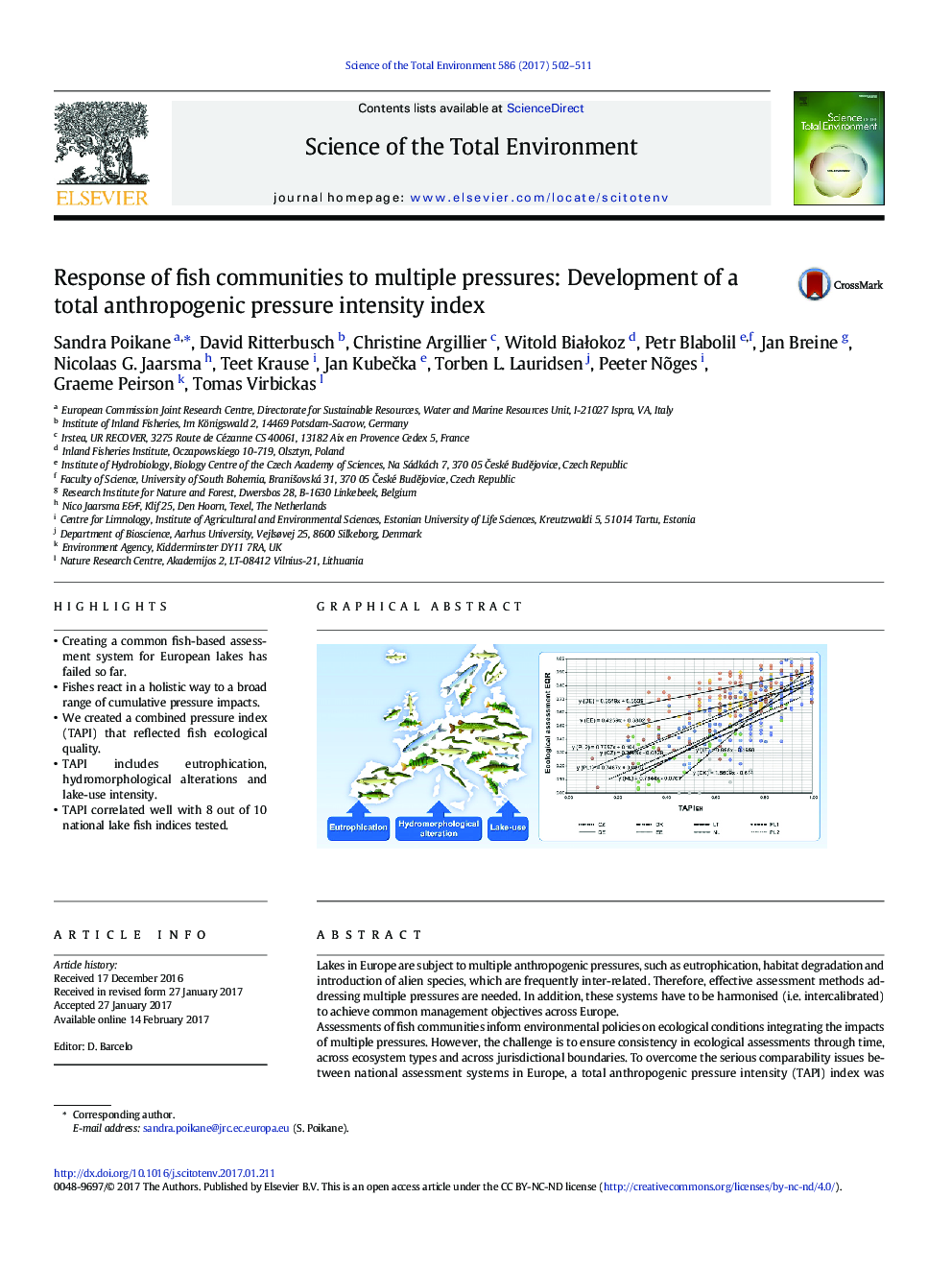| کد مقاله | کد نشریه | سال انتشار | مقاله انگلیسی | نسخه تمام متن |
|---|---|---|---|---|
| 5751146 | 1619707 | 2017 | 10 صفحه PDF | دانلود رایگان |
- Creating a common fish-based assessment system for European lakes has failed so far.
- Fishes react in a holistic way to a broad range of cumulative pressure impacts.
- We created a combined pressure index (TAPI) that reflected fish ecological quality.
- TAPI includes eutrophication, hydromorphological alterations and lake-use intensity.
- TAPI correlated well with 8 out of 10 national lake fish indices tested.
Lakes in Europe are subject to multiple anthropogenic pressures, such as eutrophication, habitat degradation and introduction of alien species, which are frequently inter-related. Therefore, effective assessment methods addressing multiple pressures are needed. In addition, these systems have to be harmonised (i.e. intercalibrated) to achieve common management objectives across Europe.Assessments of fish communities inform environmental policies on ecological conditions integrating the impacts of multiple pressures. However, the challenge is to ensure consistency in ecological assessments through time, across ecosystem types and across jurisdictional boundaries. To overcome the serious comparability issues between national assessment systems in Europe, a total anthropogenic pressure intensity (TAPI) index was developed as a weighted combination of the most common pressures in European lakes that is validated against 10 national fish-based water quality assessment systems using data from 556 lakes.Multi-pressure indices showed significantly higher correlations with fish indices than single-pressure indices. The best-performing index combines eutrophication, hydromorphological alterations and human use intensity of lakes. For specific lake types also biological pressures may constitute an important additional pressure. The best-performing index showed a strong correlation with eight national fish-based assessment systems. This index can be used in lake management for assessing total anthropogenic pressure on lake ecosystems and creates a benchmark for comparison of fish assessments independent of fish community composition, size structure and fishing-gear.We argue that fish-based multiple-pressure assessment tools should be seen as complementary to single-pressure tools offering the major advantage of integrating direct and indirect effects of multiple pressures over large scales of space and time.
470
Journal: Science of The Total Environment - Volume 586, 15 May 2017, Pages 502-511
